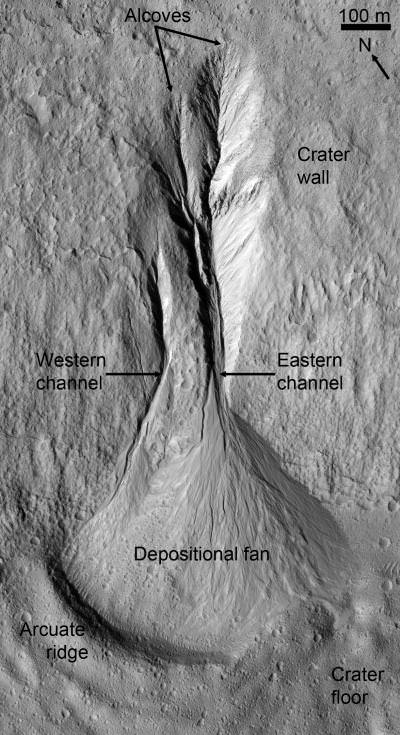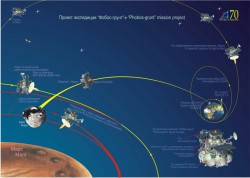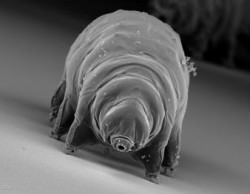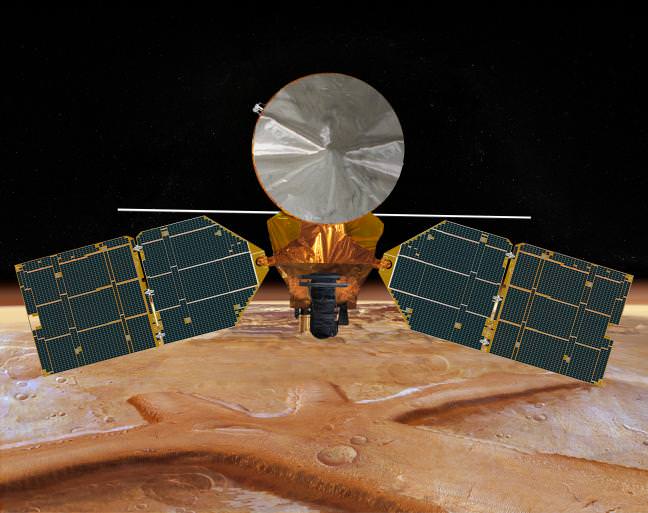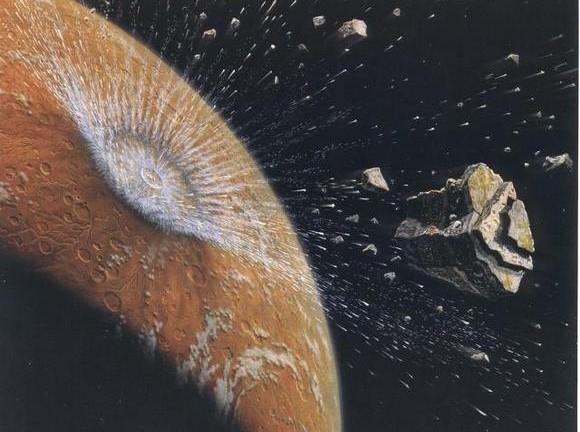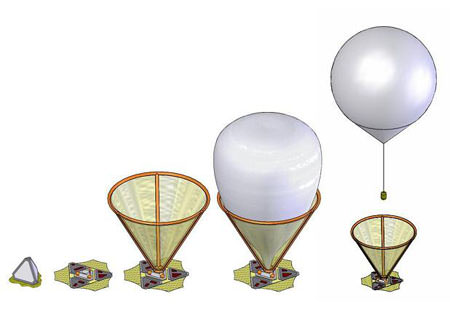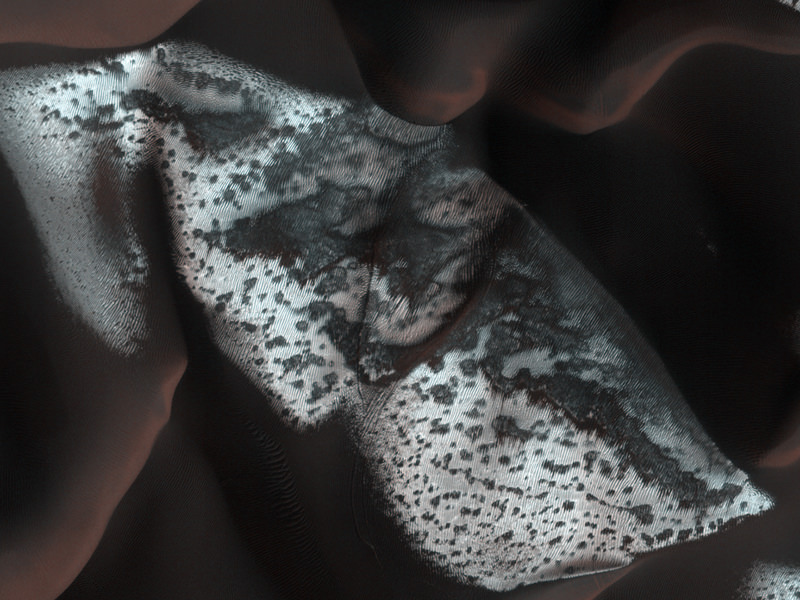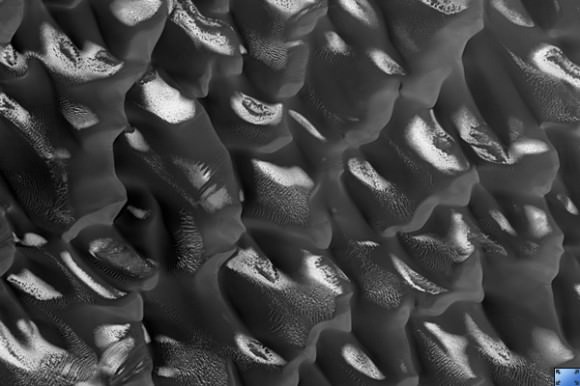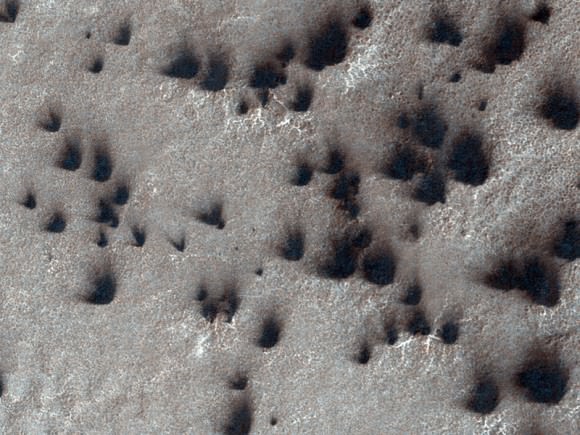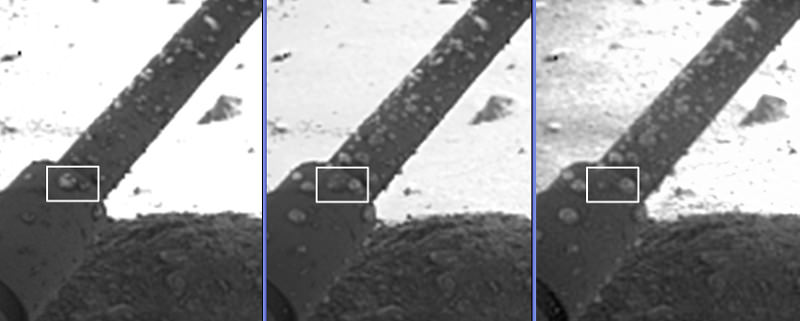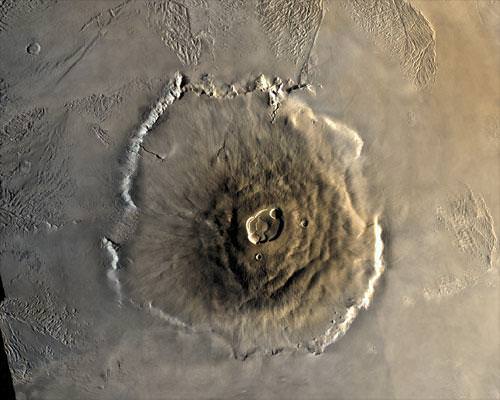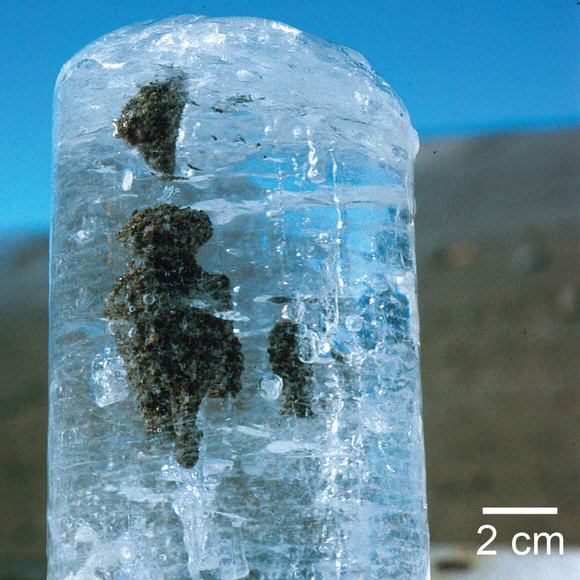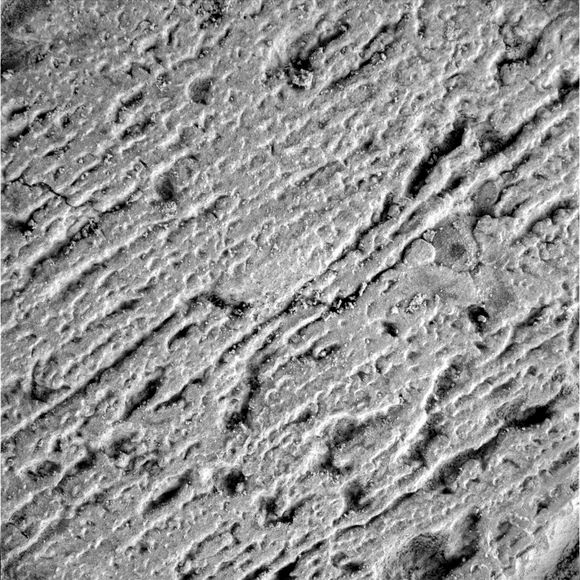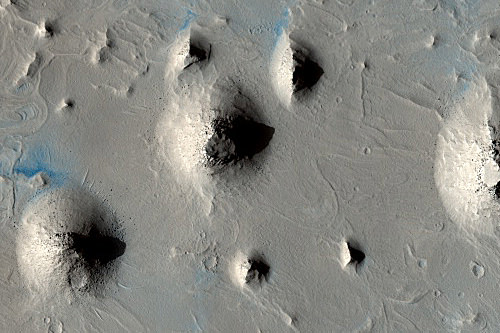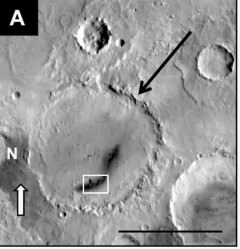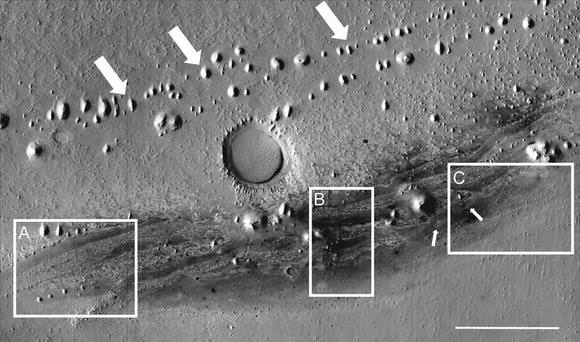[/caption]
A new study of gullies seen on Mars provides evidence that water flowed recently on the Red Planet, at least in geologic terms. Planetary geologists at Brown University have found a gully fan system on Mars that formed only about 1.25 million years ago. The structure of this fan offers compelling evidence that it was formed by melt water that originated in nearby snow and ice deposits. This time frame may be the most recent period when water flowed on the planet. This most recent finding comes on the heels of discoveries of water-bearing minerals such as opals and carbonates, and together all these discoveries provide clues that Mars was, at least occasionally, wetter and warmer for far longer than previously thought.
While gullies are known to be young surface features, it’s difficult to date them. But the Brown scientists were able to date the gully system because of craters in the area, and also hypothesize what water was doing there.
The gully system shows four intervals where water-borne sediments were carried down the steep slopes of nearby alcoves and deposited in alluvial fans, said Samuel Schon, a Brown graduate student and the paper’s lead author.
“You never end up with a pond that you can put goldfish in,” Schon said, “but you have transient melt water. You had ice that typically sublimates. But in these instances it melted, transported, and deposited sediment in the fan. It didn’t last long, but it happened.”
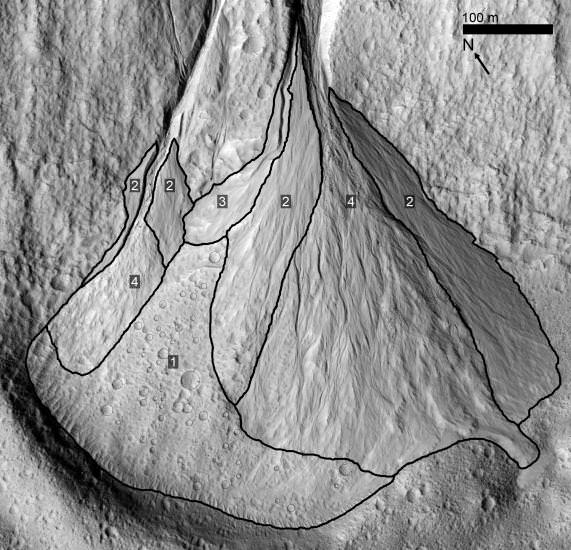
The gully system is located on the inside of a crater in Promethei Terra, an area of cratered highlands in the southern mid-latitudes. The eastern and western channels of the gully each run less than a kilometer from their alcove sources to the fan deposit.
Viewed from afar, the fan appears as one entity several hundred meters wide. But by zooming in with the HiRISE camera aboard the Mars Reconnaissance Orbiter, Schon was able to distinguish four individual lobes in the fan, and determine that each lobe was deposited separately. Moreover, Schon was able to identify the oldest lobe, because it was pockmarked with small craters, while the other lobes were unblemished, meaning they had to be younger.
Next came the task of trying to date the secondary craters in the fan. Schon linked the craters on the oldest lobe to a rayed crater more than 80 kilometers to the southwest. Using well-established techniques, Schon dated the rayed crater at about 1.25 million years, and so established a maximum age for the younger, superimposed lobes of the fan.
The team determined that ice and snow deposits formed in the alcoves at a time when Mars had a high obliquity (its most recent ice age) and ice was accumulating in the mid-latitude regions. Sometime around a half-million years ago, the planet’s obliquity changed, and the ice in the mid-latitudes began to melt or, in most instances, changed directly to vapor. Mars has been in a low-obliquity cycle ever since, which explains why no exposed ice has been found beyond the poles.
The team tested other theories of what the water may have been doing in the gully system. The scientists ruled out groundwater bubbling to the surface, Schon said, because it seemed unlikely to have occurred multiple times in the planet’s recent history. They also don’t think the gullies were formed by dry mass wasting, a process by which a slope fails as in a rockslide. The best explanation, Schon said, was the melting of snow and ice deposits that created “modest” flows and formed the fan.
The team’s findings appear in the March issue of Geology.
Source: Brown University

